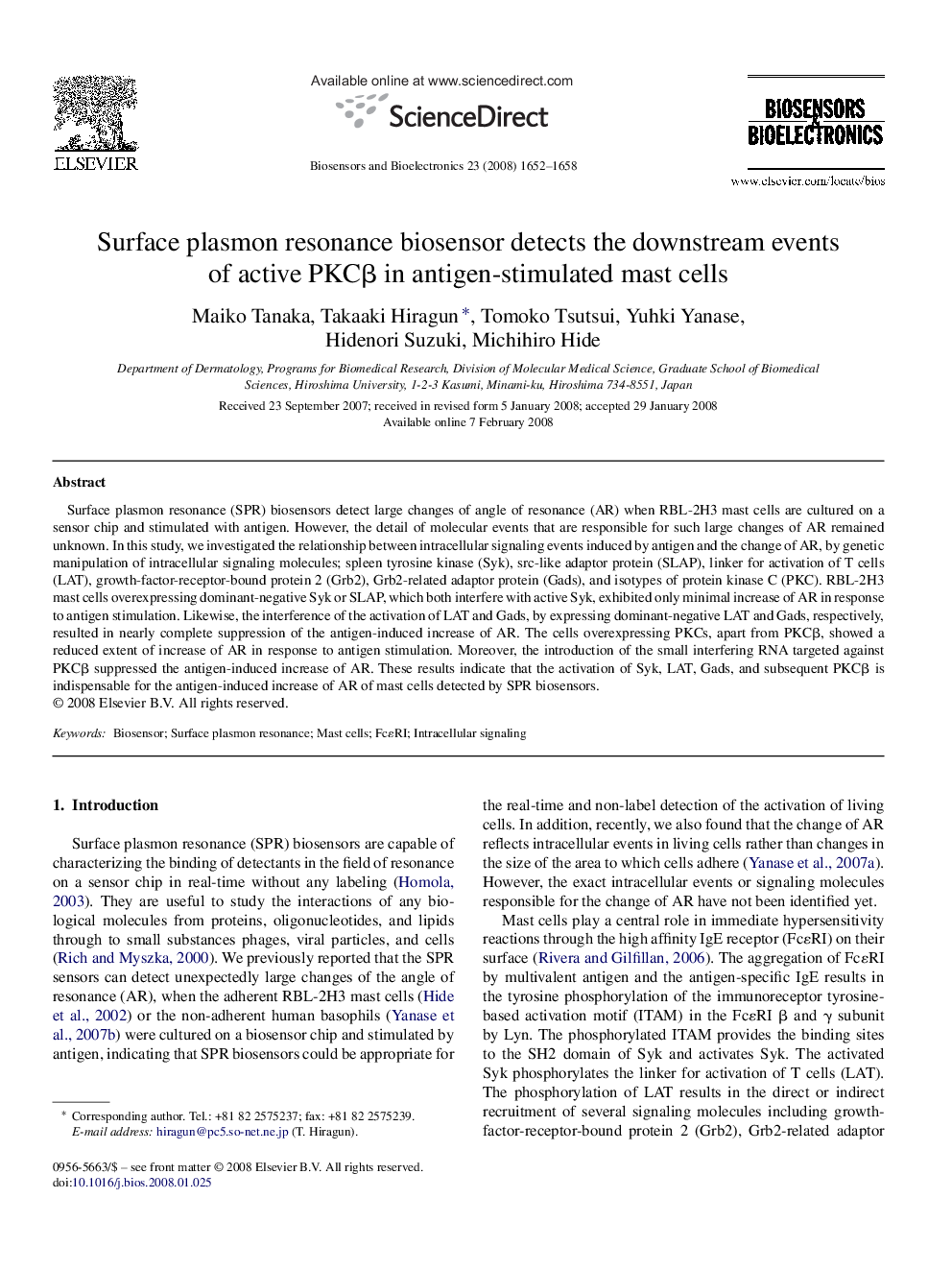| Article ID | Journal | Published Year | Pages | File Type |
|---|---|---|---|---|
| 869374 | Biosensors and Bioelectronics | 2008 | 7 Pages |
Surface plasmon resonance (SPR) biosensors detect large changes of angle of resonance (AR) when RBL-2H3 mast cells are cultured on a sensor chip and stimulated with antigen. However, the detail of molecular events that are responsible for such large changes of AR remained unknown. In this study, we investigated the relationship between intracellular signaling events induced by antigen and the change of AR, by genetic manipulation of intracellular signaling molecules; spleen tyrosine kinase (Syk), src-like adaptor protein (SLAP), linker for activation of T cells (LAT), growth-factor-receptor-bound protein 2 (Grb2), Grb2-related adaptor protein (Gads), and isotypes of protein kinase C (PKC). RBL-2H3 mast cells overexpressing dominant-negative Syk or SLAP, which both interfere with active Syk, exhibited only minimal increase of AR in response to antigen stimulation. Likewise, the interference of the activation of LAT and Gads, by expressing dominant-negative LAT and Gads, respectively, resulted in nearly complete suppression of the antigen-induced increase of AR. The cells overexpressing PKCs, apart from PKCβ, showed a reduced extent of increase of AR in response to antigen stimulation. Moreover, the introduction of the small interfering RNA targeted against PKCβ suppressed the antigen-induced increase of AR. These results indicate that the activation of Syk, LAT, Gads, and subsequent PKCβ is indispensable for the antigen-induced increase of AR of mast cells detected by SPR biosensors.
